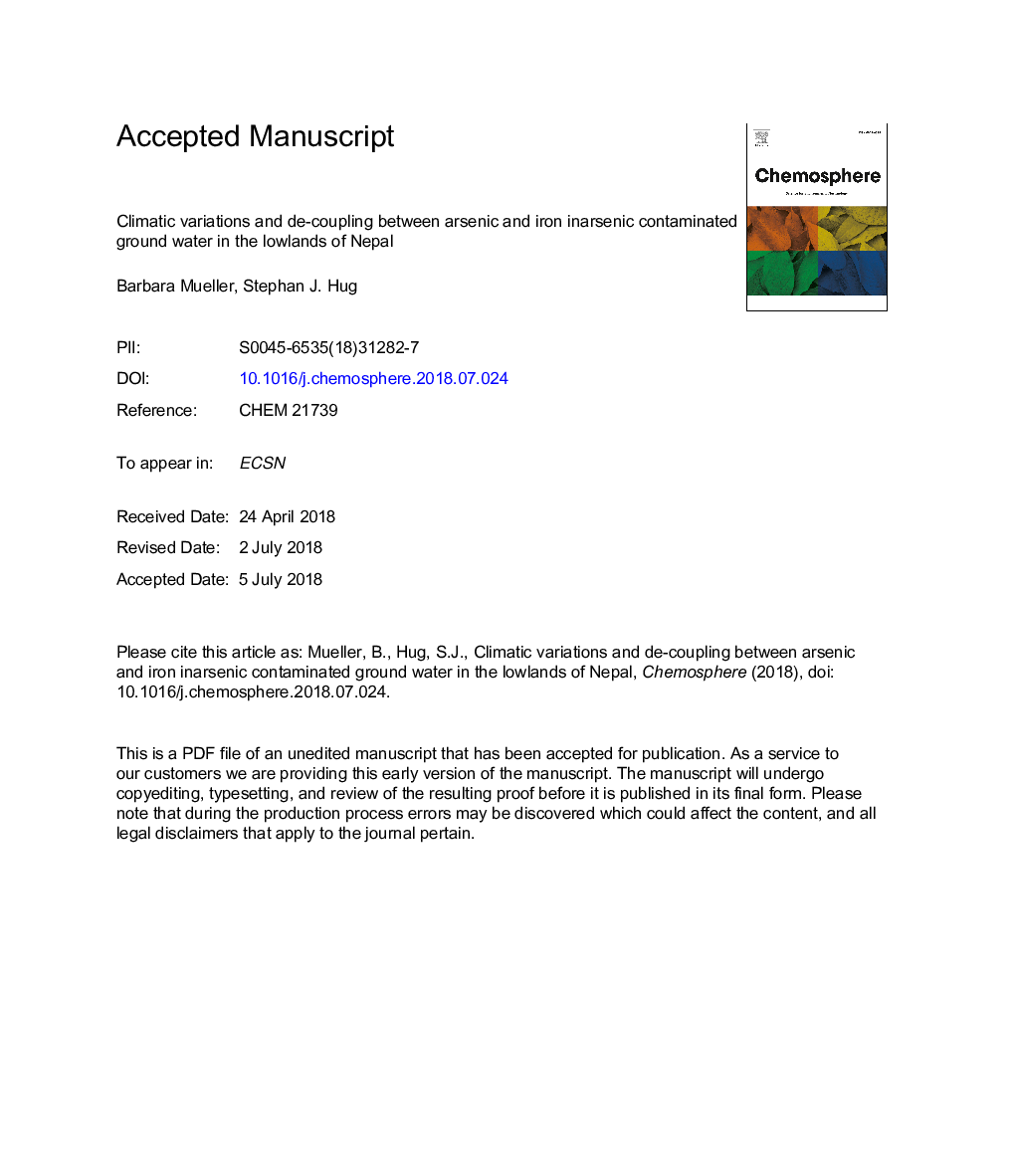| کد مقاله | کد نشریه | سال انتشار | مقاله انگلیسی | نسخه تمام متن |
|---|---|---|---|---|
| 8850402 | 1618761 | 2018 | 54 صفحه PDF | دانلود رایگان |
عنوان انگلیسی مقاله ISI
Climatic variations and de-coupling between arsenic and iron in arsenic contaminated ground water in the lowlands of Nepal
ترجمه فارسی عنوان
تغییرات آب و هوایی و عدم اتصال آرسنیک و آهن در آب های زیرزمینی آلودگی آرسنیک در مناطق نپال
دانلود مقاله + سفارش ترجمه
دانلود مقاله ISI انگلیسی
رایگان برای ایرانیان
کلمات کلیدی
آرسنیک، مواد معدنی خاک رس، موزون جدا کردن، انتشار آرسنیک به آبهای زمین،
موضوعات مرتبط
علوم زیستی و بیوفناوری
علوم محیط زیست
شیمی زیست محیطی
چکیده انگلیسی
As widely known, in several countries in South East Asia, arsenic concentrations in ground water extracted from Quaternary alluvial sediments frequently exceed the World Health Organization (WHO) drinking water guideline of 10â¯Î¼g/L. The broadly accepted hypothesis states that reductive dissolution of Fe-bearing minerals releases As-oxyanions contained within these minerals. According to the results presented in this article, As and Fe concentrations in ground water in the lowlands (Terai) of Nepal are highly variable as a function of location and there is a de-coupling of As and Fe concentrations resulting in a loss of correlation between these two elements. The mean concentrations of As and of Fe in 35 wells were slightly higher in the post-monsoon than in the pre-monsoon season. Even though As is mainly associated with iron(hydr)oxides, a substantial portion of As and Fe can be retained by clay minerals (including micas). During pre-monsoon (dry season) clayey sediments are chemically weathered losing Na and K thus remaining relatively enriched in less mobile elements such as Fe and Al. As long as reducing conditions persist, As remains relatively mobile. This article includes a detailed discussion referring to the very weak correlation or decoupling between aqueous As and Fe in the ground water and addresses possible consequences for water treatment. It sheds light on the original reservoir of arsenic being incorporated and released from clay minerals as well as from iron(hydr)oxides.
ناشر
Database: Elsevier - ScienceDirect (ساینس دایرکت)
Journal: Chemosphere - Volume 210, November 2018, Pages 347-358
Journal: Chemosphere - Volume 210, November 2018, Pages 347-358
نویسندگان
Barbara Mueller, Stephan J. Hug,
